-
Picturesque Pigeon Point Lighthouse
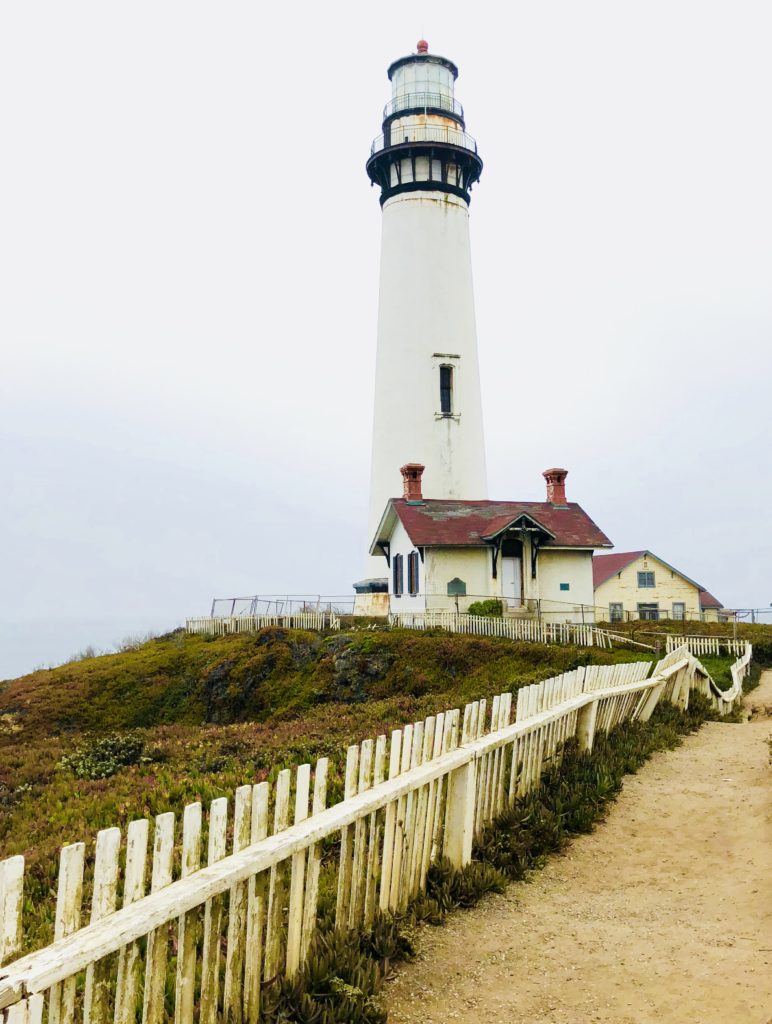
Pigeon Point is one of the most picturesque lighthouses to grace the Pacific Coast. It is also one of the tallest lighthouses in California, standing 115 feet high (it ties for this honor with Point Arena Light north of San Francisco). It was built in 1871. It is named for the clipper ship Carrier Pigeon which ran aground near Whale Point, which was renamed Pigeon Point in memory of the shipwreck. Rock-strewn and foggy, the ocean here is treacherous. Submerged rocks, swirling currents, and eddies presented a challenge even for the most experienced sailors. Due to persistent thick fog, navigational readings were unreliable. Signals from fog horns and other ships were also easily misinterpreted. After three more shipwrecks occurred in the area, Congress approved the construction of a lighthouse at a cost of $90,000, which would be over two million dollars today.
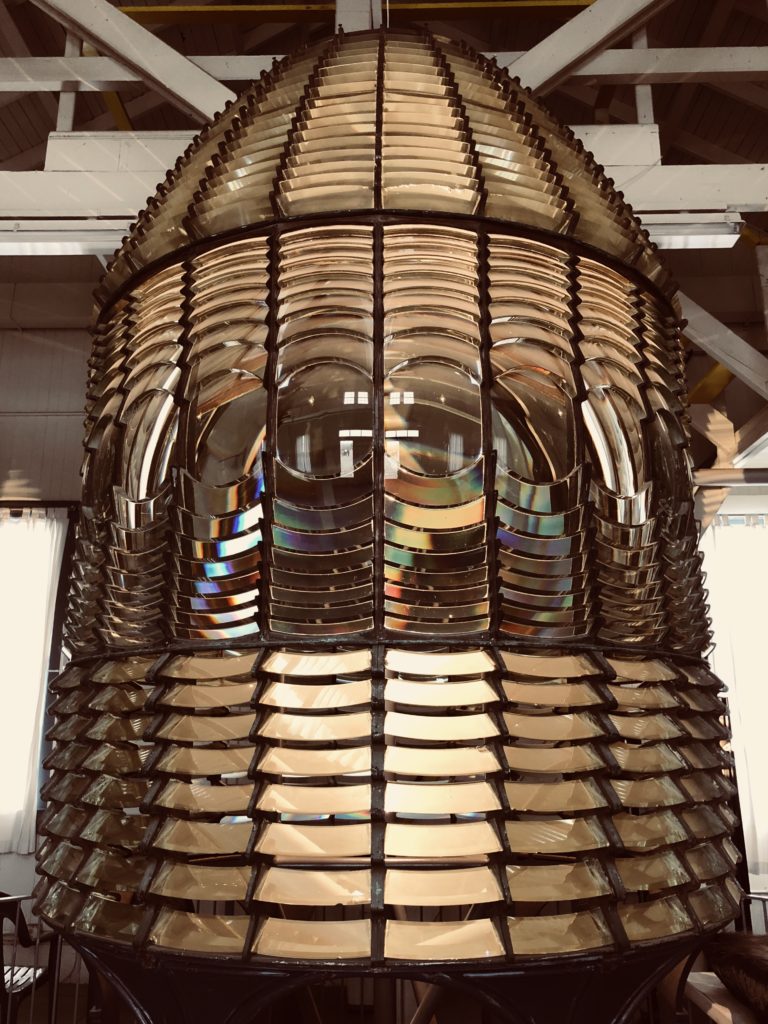
The Fresnel “beehive” design used glass prisms to bend and refract the light within to create a powerful beam. The lighthouse originally used a first-order Fresnel lens but now uses an automated one to aid navigation. Pigeon Point’s original first order lens was the largest size made. It is nearly eight feet tall, weighs 2,000 pounds, and is the biggest and strongest lens size. The lens was invented by Augustine Fresnel and consists of 1008 glass prisms. These prisms concentrate a light source within to project a strong beam over a great distance. The original Fresnel lens is now housed in the on-site museum. Pigeon Point Lighthouse had a specific pattern of a flash of light every 10 seconds to help ships identify their location. Pigeon Point also had a steam generated foghorn installed in 1899.

In 2001, brickwork supporting outside walkways on the top of the structure collapsed, and the lighthouse was closed to tours. Although you cannot tour Pigeon Point Lighthouse due to structural instability, you may explore the grounds on your own or follow a docent lead tour. It is sad to see such an amazing part of California history crumbling and deteriorating due to lack of funds to repair it. There currently are efforts by the California State Parks Foundation and the Coastside State Parks Association to raise private funds to restore the lighthouse and grounds. I hope they are successful!
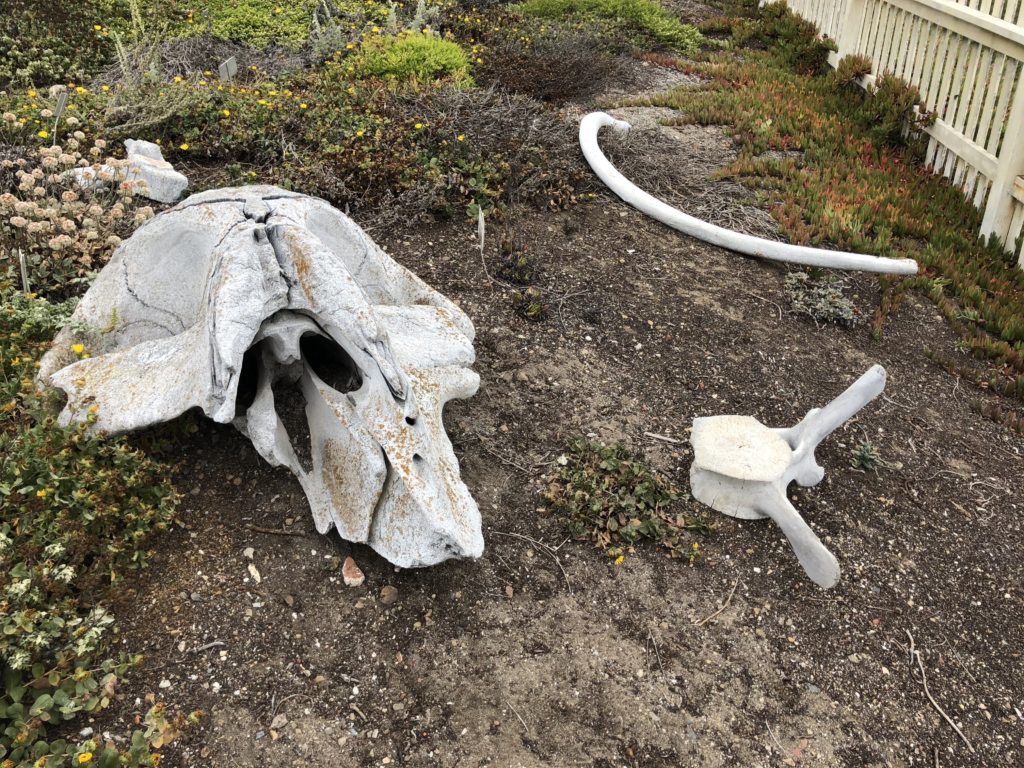
The skeletal remains of a whale are displayed on the grounds. Pigeon Point is a great place to view native wildlife, including humpback and gray whales, pelicans, cormorants, sea lions and harbor seals. You can also see a rocky island in Whaler’s Cove called Prisoner Rock because local fishermen were often trapped there during high tides. You may also enjoy seeing the remains of the Point Arena, a ship that was loading tanbark at Pigeon Point in 1913 when rough seas forced her onto the rocks, tearing a hole in her hull. You can still make out the ship’s name in the weatherbeaten wood.
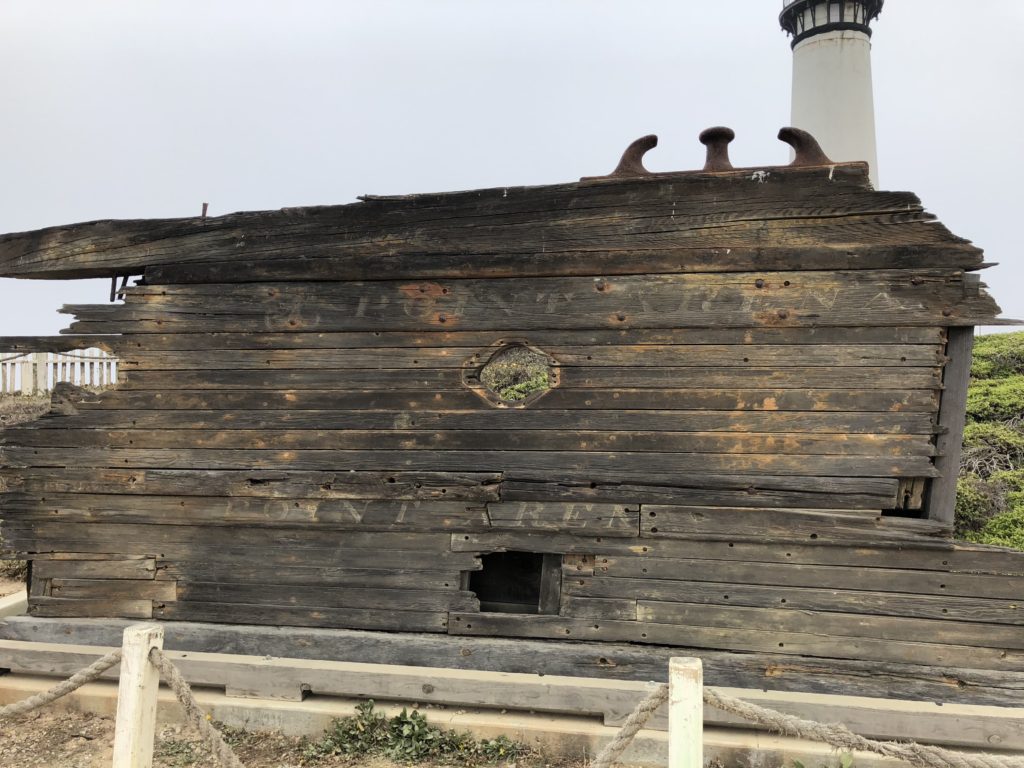
There are many meandering pathways and trails on the property to follow for great views of Whaler’s Cove. There is also a huge piece of driftwood which provides opportunities for photo ops!

Pigeon Point is a State Historic Landmark and is owned by California State Parks.
- Location: 210 Pigeon Point Road, Hwy 1, Pescadero, CA. It is 50 miles south of San Francisco and lies between Santa Cruz and Half Moon Bay.
- The phone number is 650-879-2120.
- Hours: 8 am to sunset.
- Admission is free.
- Half hour guided tours are available daily at 1 p.m.
- A museum and gift shop are open
- Pit toilets are available.
- Hostelling International rents cottages on site, see California Hostel
- Dogs, drones, and smoking are not allowed on the premises.
For more information on Pigeon Point Lighthouse, see Lighthouse and for more interesting history regarding this lighthouse see Lighthouse History
Thank you for visiting my blog! Wishing you peace, love, happiness, & beautiful vistas!
-
Point Pinos Lighthouse, Pacific Grove
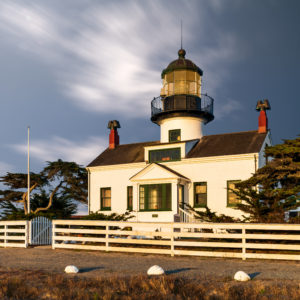
Point Pinos Lighthouse, located In Pacific Grove, is the oldest continuously operating lighthouse on the west coast of the United States. In 1855, it was the second lighthouse built in California. Alcatraz Island Lighthouse had been built 8 months previously, but in 1909 was replaced by the famous prison. Point Pinos was built atop a quaint house enabling keepers to tend the light without fearing the elements. Point Pinos Lighthouse uses a Fresnel lens manufactured in France in 1853. The beacon is still used by the Coast Guard to aid navigation and the city of Pacific Grove maintains the property. While it began as just a narrow light beam fueled by whale oil, in 1912 it used an “eclipse” that made the light blink on for 10 seconds and off for 20 seconds. Today, the light is electronic and is on for three seconds and off for one, which helps mariners identify it. Point Pinos stands 43 feet tall, approximately 90 feet above the ocean, and its lens can be seen 17 miles out to sea.
History
Point Pinos Lighthouse has had many keepers, but perhaps the most interesting was Emily Fish. Emily Fish’s sister died in childbirth, and at age 17, Emily married her dead sister’s husband, Malancthon Fish, and raised her sister’s baby daughter, Juliet. Mr. Fish, a medical doctor, died when Emily was 50 years old. Following his death, Emily applied for the position of lighthouse keeper at the Point Pinos Lighthouse in Pacific Grove, CA. This was considered highly unusual, as most women only received their positions upon the death of their lighthouse keeper husbands. Emily, however, was an anomaly. She bucked the norms and defied gender roles. She would not be foiled in her efforts, proving that no matter how old you are and what society thinks, you should always follow your dreams and aspirations.
She thrived in her position, and for over twenty years, lived and worked at the lighthouse with her menagerie of French poodles, Holstein cows, horses, and chickens. She excelled at gardening and created an oasis of grass, hedges, and trees on the lighthouse grounds. From her home in Oakland, she brought antique furniture, paintings, china, and silverware. Being a lighthouse keeper was no easy chore; rather, it was a difficult and demanding life. Emily, however, excelled at her job, and soon became known as the “Socialite Keeper” because of her flair for style and fashion and her reputation for entertaining guests at the lighthouse. During her keep, Point Pinos Lighthouse consistently received high marks for being well-kept.
While Emily is the most memorable female lighthouse keeper at Point Pinos, she was not the first. The light’s first keeper, Charles Layton, was serving on a posse in pursuit of an outlaw when he was fatally shot the first year he was appointed. His wife Charlotte, left alone with four children, replaced her husband as keeper until 1860 when she was remarried and her new husband took over the position.
If you are planning on visiting the area and would like to tour the lighthouse, please see pointpinoslighthouse for information including directions, hours, and parking. *Photo courtesy of Jay Slupesky, follow him on Instagram @jayslu